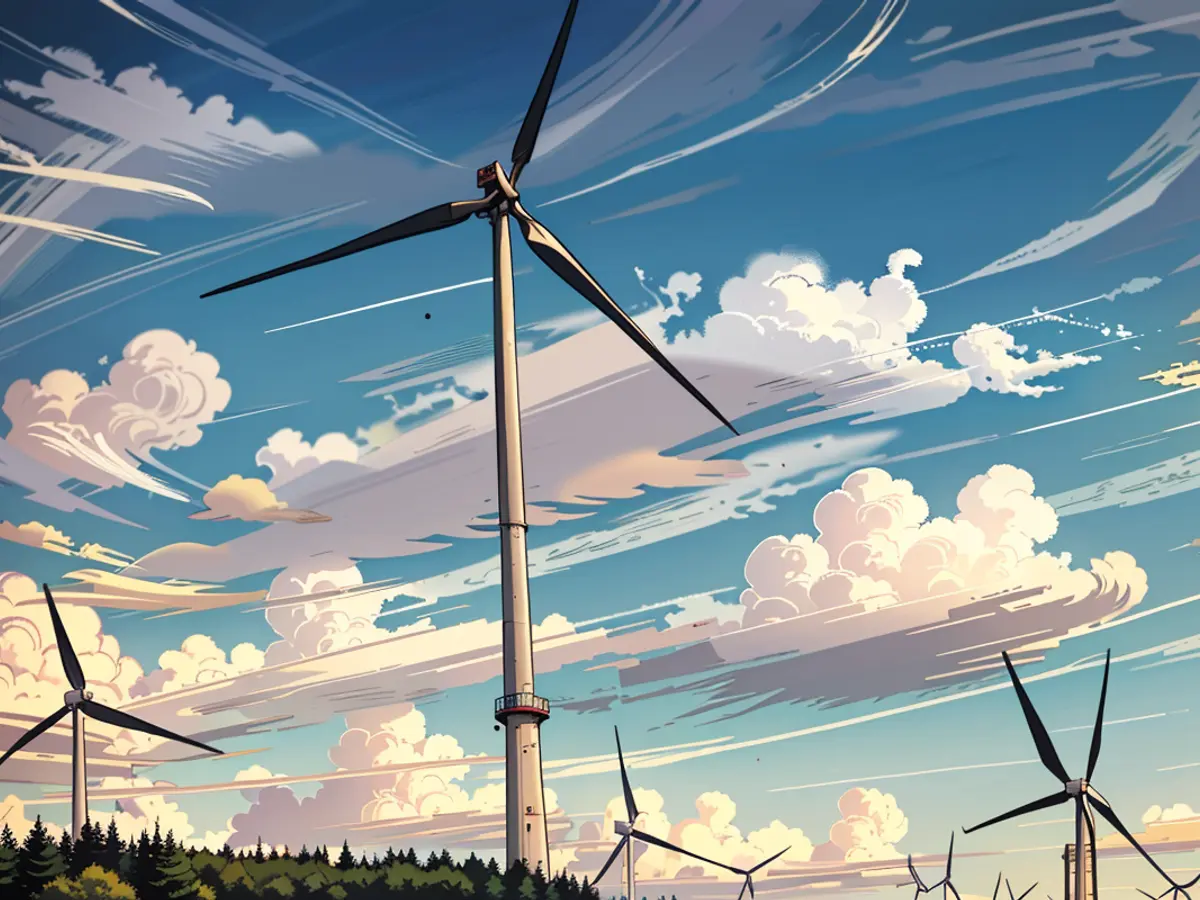Power Sources - Parliament in the state approves wind energy in wooded areas.
In the state of Saxony-Anhalt, plans are now underway to allow wind turbines to be built in forests. This move came after a decision made by the state parliament, with the support of the red-green-yellow coalition. The specific locations for these wind turbines will be determined by regional planning associations.
According to Elrid Pasbrig, the agricultural policy spokesperson for the SPD faction, states like these have already demonstrated that having wind turbines in forests is possible. As a result, forested areas could potentially be utilized for wind energy development in the future. This could result in new earning opportunities for forest owners, such as using the income to fund reforestation projects.
MPs have pushed for this change in legislation since a ruling by the Federal Constitutional Court. Judges in Karlsruhe broke the previous ban on wind turbines in Thuringia's forests. As a result, a similar ban existed in Saxony-Anhalt, making this change necessary.
Kathrin Tarricone (FDP) noted that the legislator could specify areas where turbines may not be constructed, such as protected areas. On the other hand, Alexander Rauscher (CDU) mentioned that the regional planning associations would be the ones to make the final call on the expansion of wind power and decide where turbines would be installed.
The German federal government has set legal targets for the expansion of wind power in the states. For Saxony-Anhalt, a total of 2.2 percent of the land will be used for wind energy by 2032. Within this, the regions of Anhalt-Bitterfeld-Wittenberg, Altmark, Halle, and Magdeburg should allot 2.3 percent of their land for wind power by 2032. Meanwhile, the Harz district should use 1.6 percent of its land for wind energy. When making these decisions, the natural and morphological conditions of the area, as well as the presence of protected species like the red kite, should be taken into consideration.
Read also:
In support of this change, the SPD in Saxony-Anhalt advocated for the potential benefits of wind energy in forests, citing successes in other states. This amendment to the law could pave the way for wind power expansion, providing new income sources for forest owners and contributing to the state's 2.2% wind energy target by 2032. Critics, such as Kathrin Tarricone (FDP), emphasized the need to protect certain areas, while Alexander Rauscher (CDU) left the final decisions to the regional planning associations. The approval of wind energy in forests in Saxony-Anhalt follows a judicial precedent set by the Federal Constitutional Court, which ruled against the ban in Thuringia's forests.








